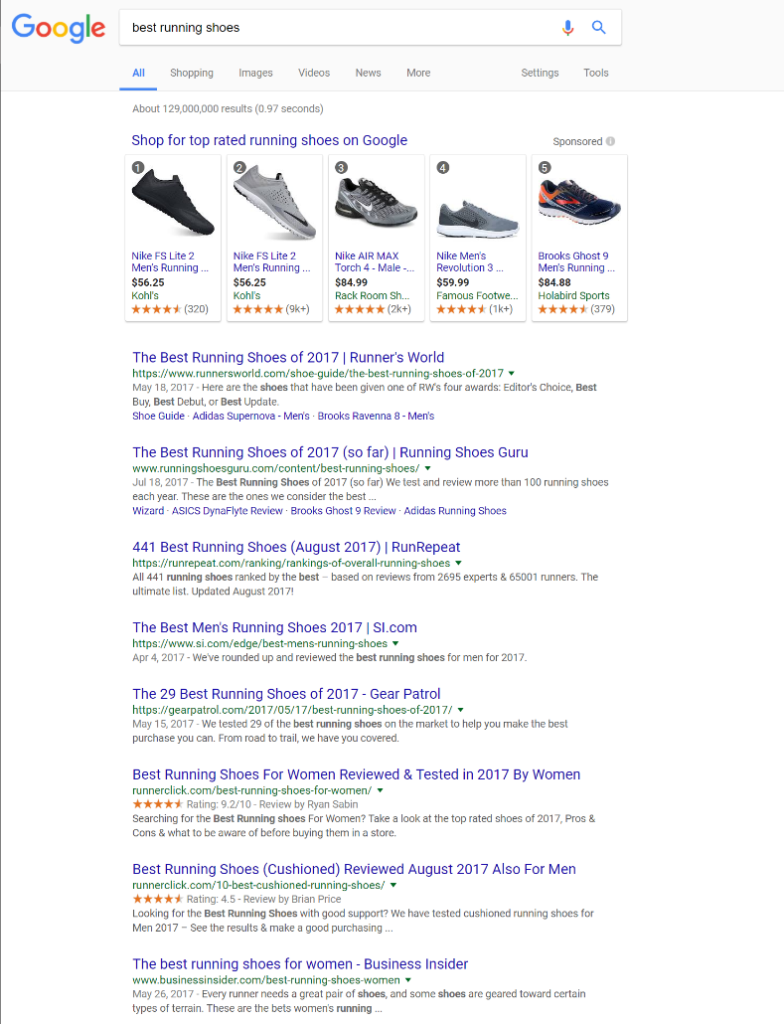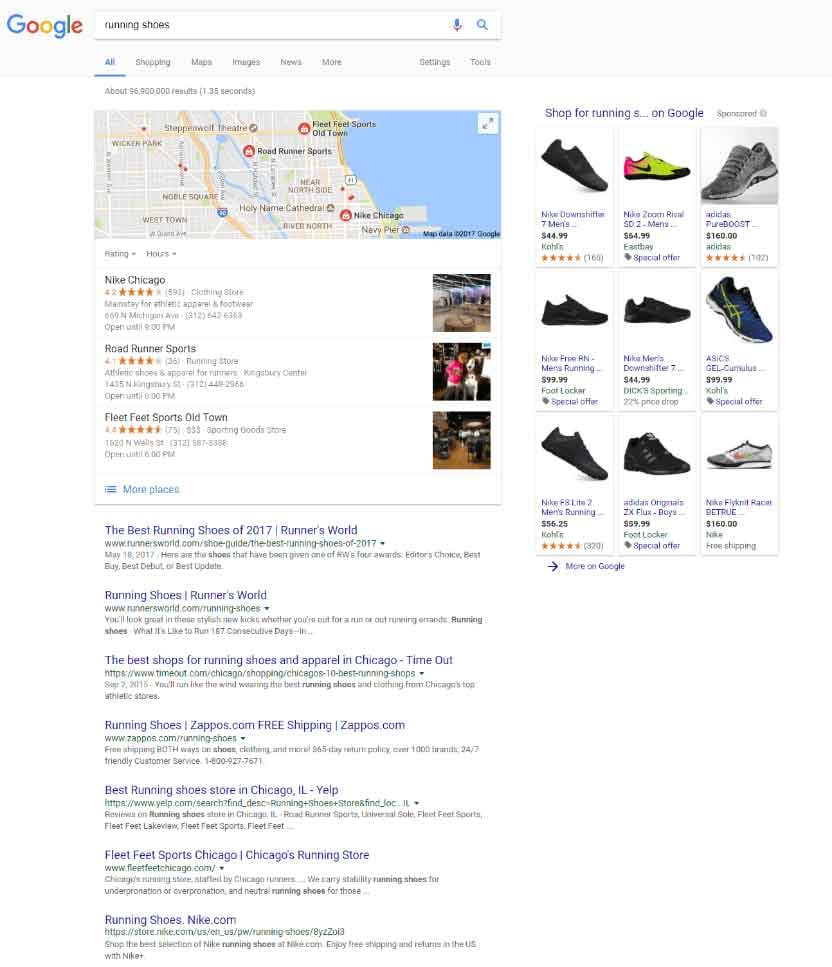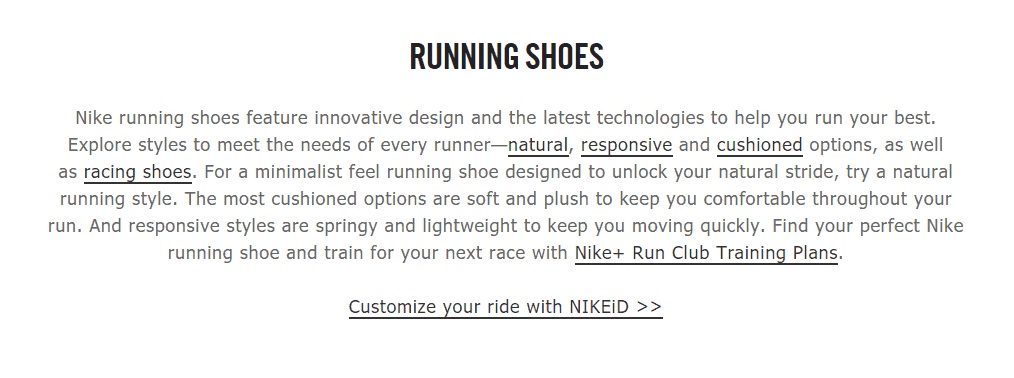
Despite what you may have heard, targeting keywords is still important for any SEO initiative. Although Google and other search engines are moving well past the placement of a keyword on specific parts of the page, it’s now critical to focus on the intent of the keyword to maximize the success of your SEO efforts.
Intent-Based Optimization
Determining the intent behind a search query was always more important to Google’s users than the occurrence of keywords on a page. Ever since Google was founded nearly 20 years ago, it has succeeded by providing its users with the “best” results for whatever users typed into the search query box.
Historically, instances of keywords used on a web page (or in the anchor text of a backlink) were the best way to algorithmically determine intent. That’s no longer (really) the case.
Significant advances in the adoption of semantic search and Google’s technology has changed the SEO game in one critical way: optimizing for the intent of the keyword is now more important than optimizing for the keyword itself.
Google’s algorithm improvements (such as Rank Brain) have allowed the search engine to determine what types of pages are best for different queries. This means that the intent of the page is more important than the instances of the actual number of keywords on the page.
If you’re an organic search veteran, this might seem obvious to you, but I cannot stress enough how important this concept is to SEO success. If you do not have content on your site to match the intent of a keyword, you will not be able to drive a meaningful amount of search traffic no matter how many times you use that keyword on your site.
How to Avoid Targeting Keywords With The Wrong Intent
Most clients I work with have too many tracked keywords with an intent that doesn’t match the true intent of the site. Prime examples of seductive keywords are those that include the word “best” in essentially any keyword phrase.
Let’s say you’re Nike and you want to drive more traffic for your running shoes. It’s natural to want to rank well for “best running shoes,” but this really isn’t the keyword you want (based on the SERP results shown here):

SERP Intent Findings
Notice that the results here contain two major components in the page topic. They are specific to the year, “2017,” and are more importantly (at least if you’re Nike) none of the top results come from a shoe manufacturer’s site.
The #1 ranking page is from runnersworld.com, and the article gives a brief explanation of several running shoes from several manufacturers this publication considers to be the best available in 2017.
Conclusion? If you’re Nike (or another shoe manufacturer), don’t focus on this keyword for your SEO campaign. You want traffic on search queries including “best” and “running shoes,” you should target them via paid search, not organic search.
Where’s the Right Keyword Intent to Target?
Let’s continue with the example of Nike wanting to perform better in organic search for running shoes. Instead of “best running shoes,” let’s shorten the keyword/search query to just “running shoes” and see what results we’re seeing in SERPs:

SERP Intent Findings
So we’re seeing a significant local presence for “running shoes” (I’m searching from Chicago) and a Nike store location is the #1 listing in the three-pack, which is great.
However, if we look at the last traditional listing in this screenshot, it’s worth noting that the main Running Shoes page on Nike.com isn’t doing as well, being the 7th ranked traditional listing. Here’s a screenshot of that page.

Here’s the SEO opportunity to focus on. The main Running Shoes Page on Nike.com lacks content and would rank better for “running shoes” if it featured optimized copy using relevant keywords above the main product images and below the <h1>, “running shoes.”
Right now, the only copy (see screenshot below) is at the very bottom of the page and is shown on the page only after you scroll past all 159 running shoe images on the page. Google and other search engines put little to no weight on content featured so far down on the page, as they know users are unlikely to ever actually see this text.

This page could also benefit substantially from descriptive alt text for each of the images of running shoes on the page. The alt text should be dynamically inserted, and be a simple formulaic approach such as:
“product name” + “gender” + “running shoes”
Learn More About Intent-Based Optimization
It takes a trained eye to determine the intent behind a keyword in today’s increasingly complex SEO landscape. This example clearly shows how just one of the words in a search query can dramatically change what is shown in the SERPs.
Need help determining if the search intent behind your SEO project’s keywords are giving you the best chance to succeed? Learn more about how Be Found Online can maximize the ROI on your SEO efforts here.

Dan Golden
Dan Golden is a veteran digital marketing executive & speaker. He liked to predict the future of digital marketing and is damn good at it. Beyond trendspotting, he has an insatiable desire to know what works and that means spending time auditing accounts, testing tactics, and diving into analytics. Dan is also a Forbes and HuffPost contributor, as well as a Lecturer at Northwestern University and DePaul University.
CATEGORIES
SUBSCRIBE TO OUR BLOG
Stay up to date with the latest industry best practices in digital marketing!























.png?width=339&height=179&name=Webinar%20Banner%20(1).png)



.png?width=339&height=179&name=July%20Webinar%20(Newsletter).png)

.png?width=339&height=179&name=Webinar%20Banner-April-02%20(1).png)
%20(4).png?width=339&height=179&name=Webinar%20Banner-May-02%20(1)%20(4).png)




.png?width=339&height=179&name=March%202023%20Webinar%20Ad%20(autoresponder).png)

















































